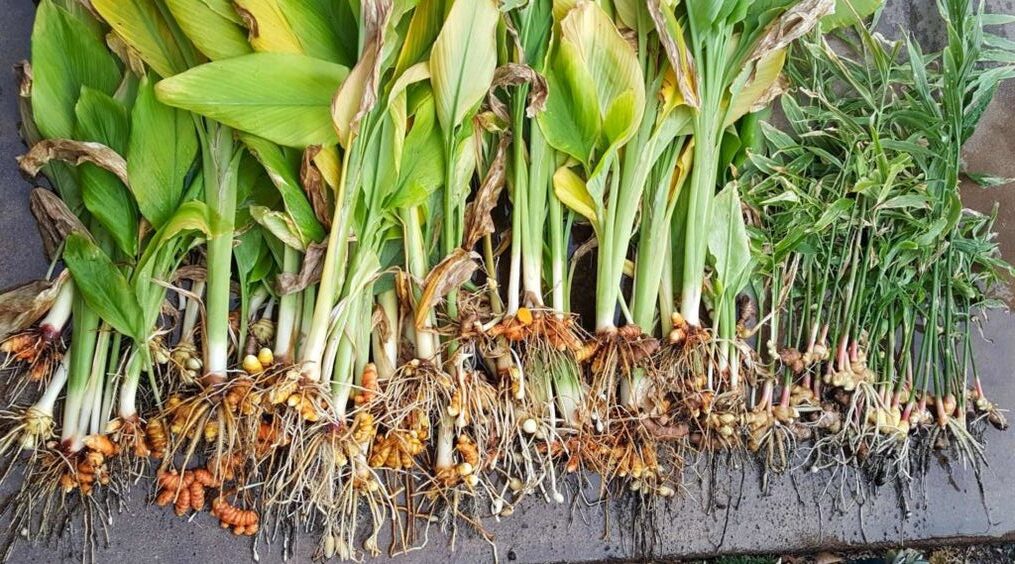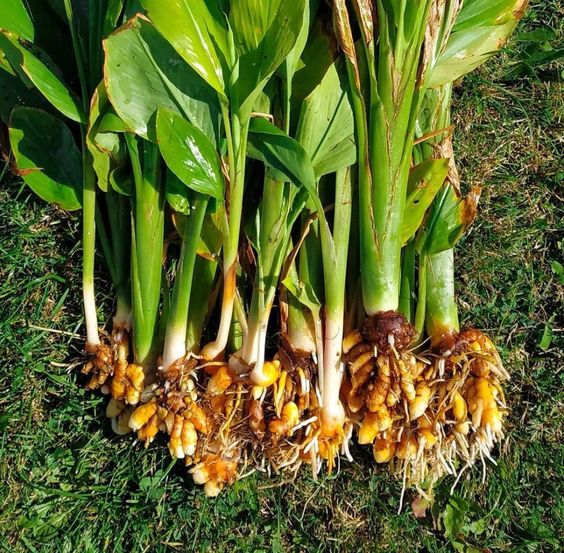Turmeric, known as the golden spice, is an essential crop in India, valued for its culinary, medicinal, and economic significance. With its increasing demand worldwide, turmeric farming offers a lucrative opportunity for Indian farmers. This guide provides an in-depth, SEO-friendly, and unique step-by-step approach to turmeric farming in India.
1. Introduction to Turmeric Farming
Turmeric (Curcuma longa) is a perennial plant belonging to the ginger family, Zingiberaceae. It thrives in tropical climates, making India an ideal location for its cultivation. Understanding the crop’s requirements and growth cycle is essential for successful farming.
2. Selecting the Right Turmeric Variety
Choosing the appropriate turmeric variety is crucial for yield and quality:
- Erode Local: Known for high curcumin content.
- Salem: Preferred for its vibrant yellow color.
- Rajapuri: Large rhizomes, suitable for processing.

3. Soil Preparation and Requirements
Turmeric requires well-drained, fertile soil. Ideal soil types are loamy or sandy loam with a pH of 4.5 to 7.5. Here’s how to prepare the soil:
- Ploughing: Deep plough the field to a depth of 25-30 cm to eliminate weeds and aerate the soil.
- Organic Matter: Incorporate 20-25 tons of well-decomposed farmyard manure (FYM) per hectare to enhance soil fertility.
4. Planting Turmeric: Step-by-Step
Proper planting techniques are essential for a bountiful turmeric harvest:
Timing
- Optimal Season: Plant from April to June, coinciding with the onset of monsoon rains for adequate moisture.
Seed Rhizomes
- Selection: Choose healthy, disease-free rhizomes. Cut them into 30-40 gram pieces, each with one or two viable buds.
Planting Method
- Spacing: Maintain 30-45 cm between rows and 15-20 cm between plants.
- Depth: Plant rhizomes 5-7 cm deep.
- Raised Beds: Form beds 15-20 cm high to ensure proper drainage.
Planting Steps
- Soil Preparation: Prepare a fine tilth by deep ploughing and adding organic manure.
- Marking: Mark the planting spots according to the spacing guidelines.
- Planting: Place rhizome pieces with buds facing upwards, cover with soil, and press gently.
- Mulching: Apply organic mulch like straw to retain moisture, suppress weeds, and regulate soil temperature.
5. Irrigation Management
Turmeric requires consistent moisture. Effective irrigation practices include:
- Frequency: Water the crop regularly, particularly during dry periods. Use overhead or drip irrigation systems.
- Drainage: Ensure fields have good drainage to prevent waterlogging and rhizome rot.
6. Nutrient Management
Balanced fertilization is critical for healthy growth:
- Organic Manure: Apply 20-25 tons of FYM per hectare as a basal dose.
- Chemical Fertilizers: Use 60 kg Nitrogen (N), 50 kg Phosphorus (P2O5), and 120 kg Potassium (K2O) per hectare, split into three doses.
7. Weed Control
Effective weed management ensures optimal growth:
- Manual Weeding: Conduct hand weeding at least three times during the crop cycle.
- Mulching: Use organic mulches to suppress weed growth and conserve soil moisture.
8. Pest and Disease Management
Turmeric is vulnerable to pests like rhizome flies and diseases like leaf blotch. Control measures include:
- Crop Rotation: Avoid continuous turmeric cultivation; rotate with crops like maize or legumes.
- Organic Sprays: Use neem oil or garlic extract for pest control.
- Fungicides: Apply copper-based fungicides to manage fungal diseases.
9. Harvesting and Post-Harvest Processing
Turmeric is ready for harvest 7-9 months after planting:
- Maturity Signs: Leaves turn yellow and start drying.
- Harvesting: Lift plants carefully with a spade to avoid damaging rhizomes.
- Processing: Boil rhizomes for 30-45 minutes, sun-dry for 10-15 days, then polish and grind into powder.
10. Marketing Strategies
Conclusion
Turmeric farming in India, when executed correctly, can be highly profitable and sustainable. By following these detailed steps, farmers can achieve high yields and meet the growing demand for this golden spice globally. Adopting modern agricultural practices and maintaining organic standards can further enhance the quality and marketability of turmeric.

